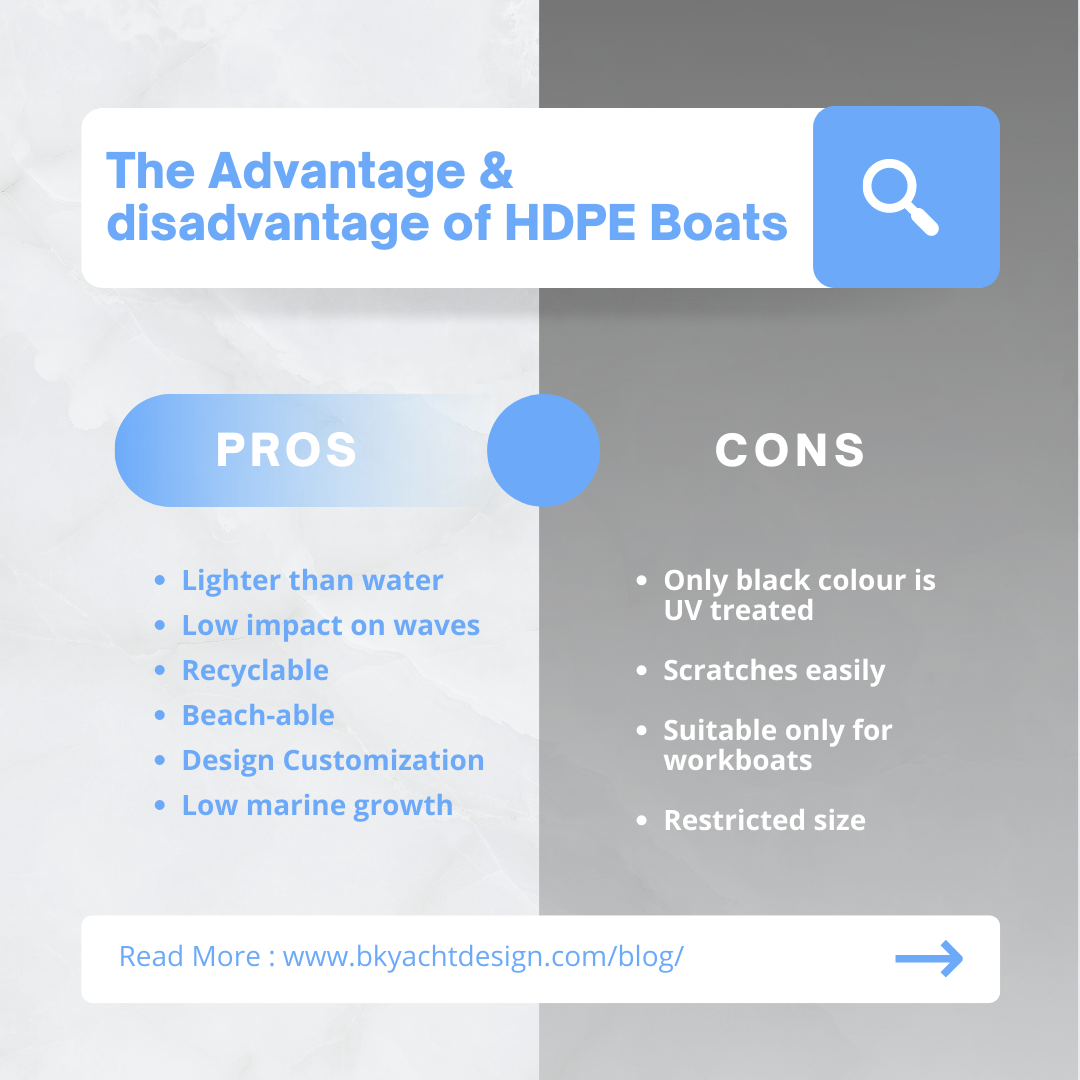
PROS & CONS of HDPE BOATS
Pros :
Lighter than water: HDPE has a density of 930 to 970 kg/m3, which is lighter than the density of water. This is a big advantage to the material over FRP or aluminum as the HDPE part of the boat will float even if the boat is damaged without any additional flotation material. Therefore, additional buoyancy must only be provided to offset the weight of the equipment and passengers.
Low impact on waves: In essence, it absorbs all the shocks generated on the boat when exposed to waves. This allows you to have a smooth ride even in bad weather. The difference can be easily felt when operating an FRP boat or aluminum boat in inclement weather where shocks/impacts from waves in the body can be felt. But this impact is significantly reduced for HDPE boats.
Recyclable: HDPE can be easily recycled when converted back into granules and reformed into sheets. So all virgin panels can be converted into recycled panels. This is a huge advantage as a boat can be completely recycled to create a new boat. But builders should be careful and pay attention to the mechanical properties of HDPE boards after recycling, as they can degrade in the process.
Beach-able: The HDPE boat is known for its durability and one of the main reasons it got its name is its ability to bring the boat to shore. This is completely impossible with other materials as the paint or structure can be damaged in the process. A central girder protects the lower body and serves as the backbone in this case.
Design Customization: This is a big advantage over FRP because you don’t need a mold to build a boat. HDPE boats can be customized and design changes can be made at any time. This is great for builders as they can customize the boat to the owner’s requirements at any time.
Low Marine Growth: In general, HDPE has a shiny surface and due to the nature of its material it protects the boat from dirt. HDPE can still get fouling or marine growth if the boat is left in the water for a long time without maintenance or operation. Therefore, owners should be careful about this.
Cons :
Scratches easily: The main disadvantage of HDPE is that it scratches very easily. Scratches may occur during shipping or during assembly. Since this material is used for commercial boats, these scratches are not a big deal. But this is the main reason why HDPE material is not suitable for luxury boats.
Only black color is UV treated: Only black HDPE sheets are UV treated and this provides no other choice in color. HDPE composite contains 3% carbon and acts as a UV stabilizer. Other colors may be used for aesthetic purposes that are not exposed to direct sunlight.
Restricted Size: Usually, HDPE boats have limited sizes because they are not suitable for very large sizes (> 15 m). There are boats built larger than this, but the HDPE material is relatively new on the market and its long-term problems are undetermined. Boats that are constantly undergoing hogging and sagging during long periods of operation can cause the boat to expand. This must be considered when designing larger boats.
Suitable only for Workboats: Due to causes such as scratches, non-adhesive, only black color, HDPE material is only suitable for workboats. Although this is a drawback as it is the most suitable material for workboats, it is not really necessary to try luxury boats in HDPE.

0 comments